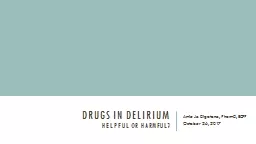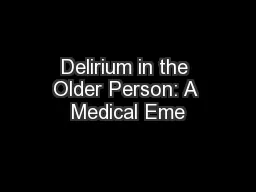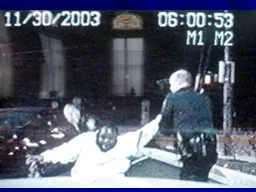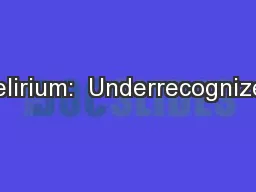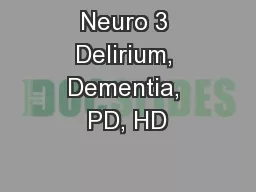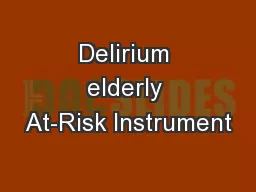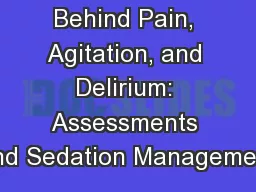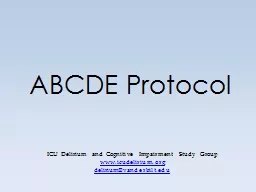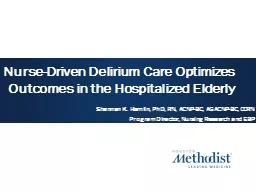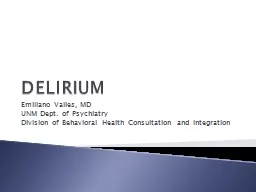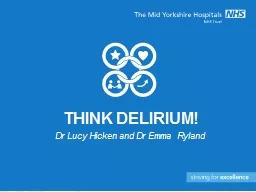PPT-Drugs in Delirium Helpful or Harmful?
Author : myesha-ticknor | Published Date : 2020-04-10
Amie Jo Digatono PharmD BCPP October 26 2017 Objectives Describe the impact and pathophysiology of delirium Identify patients who are at increased risk for delirium
Presentation Embed Code
Download Presentation
Download Presentation The PPT/PDF document " Drugs in Delirium Helpful or Harmful?" is the property of its rightful owner. Permission is granted to download and print the materials on this website for personal, non-commercial use only, and to display it on your personal computer provided you do not modify the materials and that you retain all copyright notices contained in the materials. By downloading content from our website, you accept the terms of this agreement.
Drugs in Delirium Helpful or Harmful?: Transcript
Download Rules Of Document
" Drugs in Delirium Helpful or Harmful?"The content belongs to its owner. You may download and print it for personal use, without modification, and keep all copyright notices. By downloading, you agree to these terms.
Related Documents

